<publications: books>
"My publications typically focus on the use of technology to facilitate musicianship. I've authored a sequence of three music technology books published by Oxford University Press (OUP): Foundations of Music Technology, Interactive Composition, and Max/MSP/Jitter for Music. Other publications, like Environmental Sound Artists, focus on artistic creativity and innovative processes, while my journal articles and contributions to professional periodicals cover a range of topics including music theory, technology, and education; in particular, the notion of using technology to facilitate musicianship with non-musicians, and separating the cognitive functions of musicianship from the physical actions of performance. I'm also the editor of a books series with OUP called Creating Technology for Music. ~V.J.
Foundations of Music Technology
Book Info
Foundations of Music Technology explores the core concepts of music technology and its uses as a mechanism to facilitate musicianship in a way that is accessible to all students--from the musician with limited technology skills to the technology expert with little knowledge in music notation. The text uses a free, customized software application for Mac or PC in order to demonstrate fundamental concepts of music technology germane to all professional applications like recording, synthesis, digital notation, MIDI, automating effects, acoustics, and more. With the concepts grasped using this "software-independent" approach, students can then transfer those learned skills over to the software of their choice.
Max/MSP/Jitter for Music, 2nd Edition
Book Info
In Max/MSP/Jitter for Music (2nd Edition), expert author and music technologist V. J. Manzo provides a user-friendly introduction to a powerful programming language that can be used to write custom software for musical interaction. Through clear, step-by-step instructions illustrated with numerous examples of working systems, the book equips you with everything you need to know in order to design and complete meaningful music projects. The book also discusses ways to interact with software beyond the mouse and keyboard through use of camera tracking, pitch tracking, video game controllers, sensors, mobile devices, and more.
Interactive Composition (2nd Edition)
Book Info
Interactive Composition empowers readers with all of the practical skills and insights they need to compose and perform electronic popular music in a variety of popular styles. The book begins by introducing all of the tools involved in creating interactive compositions through the software Ableton Live and Max for Live. The following chapters then put the tools to use by both describing particular musical styles and also teaching readers how to compose and perform within these styles using the software. As readers progresses through the book, they will learn to use the software to facilitate their own unique compositional objectives.
Max/MSP/Jitter for Music
Book Info
In Max/MSP/Jitter for Music, expert author and music technologist V. J. Manzo provides a user-friendly introduction to a powerful programming language that can be used to write custom software for musical interaction. Through clear, step-by-step instructions illustrated with numerous examples of working systems, the book equips you with everything you need to know in order to design and complete meaningful music projects. The book also discusses ways to interact with software beyond the mouse and keyboard through use of camera tracking, pitch tracking, video game controllers, sensors, mobile devices, and more.
This was my first book with OUP, so it will always have a special place in my heart. In fall 2009, I was in the second year of my doctoral program and was directing music technology studies at Montclair State University. I was preparing for a College Music Society conference presentation in Portland on the work I was doing with EAMIR, and my, now, editor at OUP, Norm Hirschy, emailed me and invited me to get coffee to discuss a potential book on that subject. Soon after there was a contract and writing guidelines and all sorts of ideas! I remember feeling very excited when I asked David Elliott to write the forward and he enthusiastically said yes. I also remember spending summer 2010 on a tight writing schedule; many of the book chapters were adapted from lectures I'd been giving in my classes at MSU—some of the students in my classes helped me proofread the text and work through the chapter examples to make sure I didn't miss any steps. Cycling '74 was in the loop on this book and was releasing Max 6 in beta just around the time that the book was heading into final production, so I was thankful to be able to do some small revisions to make the book "Max 6 ready" just before its release. That was a really great time in my life and a very enjoyable first "big" publication.
Interactive Composition
Book Info
Interactive Composition empowers readers with all of the practical skills and insights they need to compose and perform electronic popular music in a variety of popular styles. The book begins by introducing all of the tools involved in creating interactive compositions through the software Ableton Live and Max for Live. The following chapters then put the tools to use by both describing particular musical styles and also teaching readers how to compose and perform within these styles using the software. As readers progresses through the book, they will learn to use the software to facilitate their own unique compositional objectives.
After Max/MSP/Jitter for Music came out in 2011, I wanted to write a similar book that focused on building tools for creative expression—specifically, for composition. Will Kuhn and I met in 2010 and quickly formed a friendship. We talked about doing an "Ableton book" and this is what we devised: a book that started off with a bootcamp into using Ableton Live and Max (MaxforLive), and then a showcase of how music-makers in various musical genres develop, adapt, and use tools to facilitate their creative ideas. This was a very fun book to make, and Will and I spent a lot of time making jokes and being philosophical about music, movies, and technology when we were supposed to be sticking to our writing schedule. After we had an outline, Will and I each took charge of writing different chapters; I was writing "my" chapters for this while I was writing Foundations of Music Technology, and it was nice being able to switch back and forth between writing about different topics. Ableton was in the loop on our project and, like with the "Max book", we were in the beta list and able to ensure that our book was ready for what was then the forthcoming "Live 10". I remember that Will and I were both very happy when Morton Subotnick said that he would write the forward for us. This was a very fun book to put together and a busy process that I enjoyed very much.
Environmental Sound Artists
Book Info
Environmental Sound Artists: in their own words, is an incisive and imaginative look at the international environmental sound art movement, which emerged in the late 1960s. The term environmental sound art is generally applied to the work of sound artists who incorporate processes in which the artist actively engages with the environment. While the field of environmental sound art is diverse and includes a variety of approaches, the art form diverges from traditional contemporary music by the conscious and strategic integration of environmental impulses and natural processes.
This book presents a current perspective on the environmental sound art movement through a collection of personal writings by important environmental sound artists. Dismayed by the limitations and gradual breakdown of contemporary compositional strategies, environmental sound artists have sought alternate venues, genres, technologies, and delivery methods for their creative expression. Environmental sound art is especially relevant because it addresses political, social, economic, scientific, and aesthetic issues. As a result, it has attracted the participation of artists internationally. Awareness and concern for the environment has connected and unified artists across the globe and has achieved a solidarity and clarity of purpose that is singularly unique and optimistic. The environmental sound art movement is borderless and thriving.
Creating Technology for Music
Series Info
Creative people use, make, and modify technology as “tools” to support their creative vision. Performing musicians view their instruments as tools, and, likewise, instrument-makers routinely make and modify “tools to make tools”! If you’ve ever seen someone perform or build a musical instrument, you’ve likely noticed specialized tools built to accomplish very specific tasks. Regardless of whether those tools are made of steel or made of code, they are invaluable to the person who created that technology, knows its purpose, and relies on it as part of their process. This book series, “Creating Technology for Music”, explores the convergence of technology and musicianship in this light. Regardless of whether you are an instrument-maker building an instrument or a music-maker modifying your tools to function in a particular way, you are taking part in a centuries-old tradition through which creative people develop and refine tools to support their creative ideas. Throughout this tradition, musicians have placed demands on instrument-makers to help them facilitate new musical ideas, and, likewise, instrument-makers have developed tools that have unlocked novel possibilities for creative expression. This book series presents various types of technology through the lens of creating musical experiences for various listeners; the guiding theme: make tools, then make music.


.png)



.png)
.jpg)
.png)

